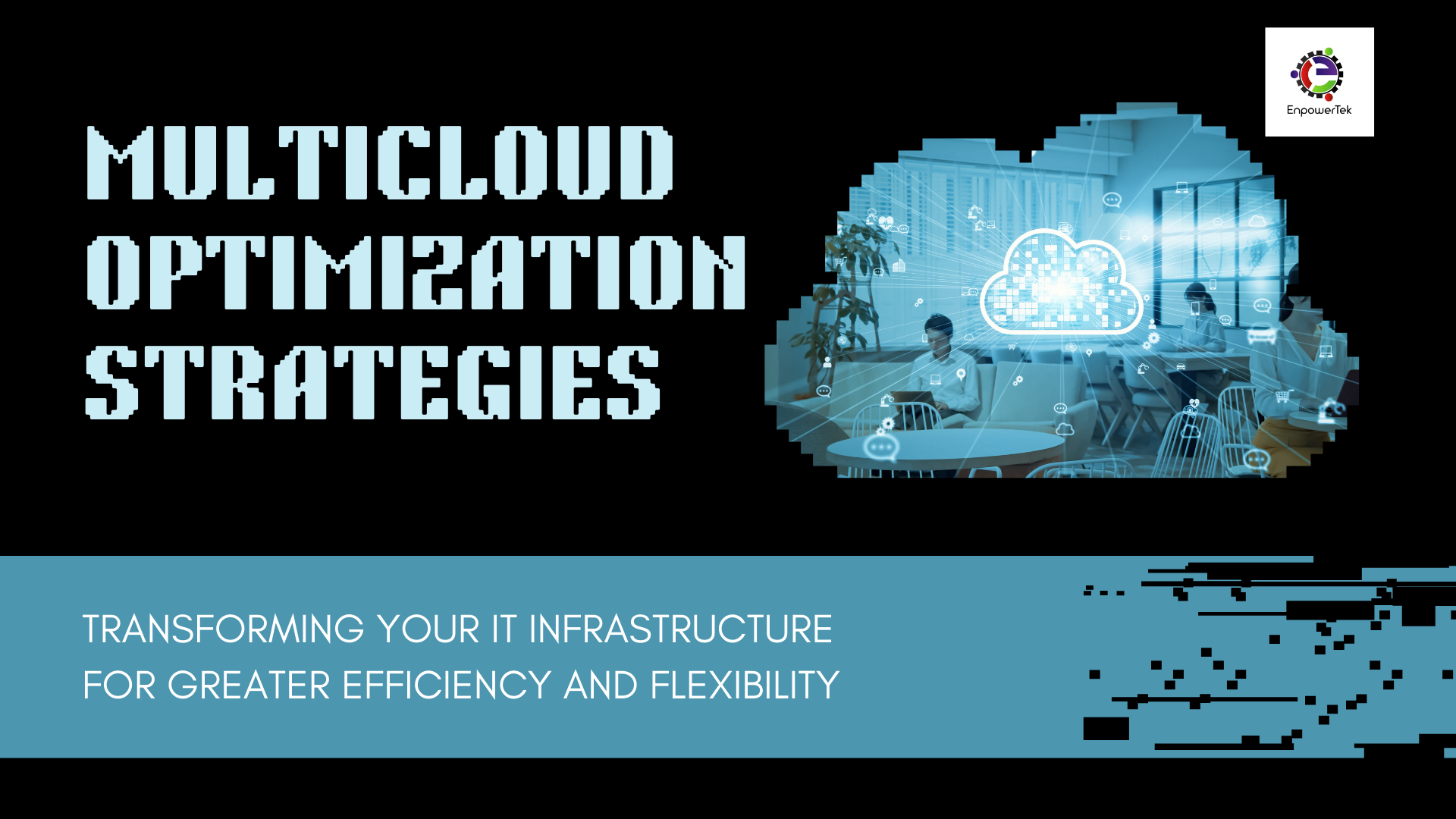
author: Enpowertek Admin
date: October 7, 2024
In the process of enterprise digitalization, the multi-cloud model has emerged. Google Cloud, AWS, and Microsoft Azure have different features. They can set up interconnected to make the most of every cloud platform. Yet, it can be challenging to manage and optimize this setup.
In this blog by EnpowerTek, we will explore tactics that will assist you in successfully purchasing and managing a multi-cloud environment.
Cloud platforms are not uniform across the market. Google Cloud, AWS, and Microsoft Azure all have different strengths, and understanding what they are can help you with your multi-cloud strategy.
Google Cloud
An important factor about Google Cloud is that it is already considered the leader in artificial intelligence and machine learning. It also provides robust data analytics tools, such as big queries. Organizations that focus on making intelligent decisions and dependable artificial intelligence and machine learning workloads depend on Google Cloud. It also has an international presence, which means quick connection, particularly for businesses with a disbursed client base in various parts of the world.
AWS (Amazon Web Services)
Based on the concept of shared resources, AWS is the world’s largest cloud provider, providing an unmatched portfolio of services and tools. It is the most preferable option for those companies that require most services ranging from computing and storage to networking and databases. An advantage of AWS is that it has been tested for scalability, and the OPEX business model is also affordable for many organizations.
Microsoft Azure
Microsoft Azure is suitable for firms that already rely on Microsoft solutions. It also supports the integration with Microsoft products such as Office 365, and Windows Server, among others. Further, Azure possesses flexibility in that these systems can be connected to on-premises systems with cloud systems. Security-wise, Azure is also secure enough to offer industries with strict security requirements.
Build a Unified Management and Monitoring System
In a multi-cloud environment, one of the main issues relies on the fact that various managing and monitoring platforms are used. The cloud providers have ways of interfacing, and the tools and services they offer in the cloud environment may not suit your business. This is what you should do to provide simplified management across multiple cloud services.
Centralized Management Tools
Managing multiple clouds needs to be dealt with using a single management platform. Google Anthos, AWS Control Tower, and Azure Arc provide methods to manage workloads across dumps from a single console. These tools provide visibility and control of resources so you do not find yourself in an out-of-control cloud environment or underutilized resources.
Automated Monitoring and Alerts
When you set up monitoring, you have in place methods to help you find when something is not as it should be, whether it be a performance-related problem or a security problem. All four platforms, AWS, Google Cloud, Microsoft Azure, and Apache Kafka, can be integrated with AWS CloudWatch, Monitoring & Azure Monitor to monitor performance parameters on every platform. This helps to respond to the issue before the users see it.
According to the survey of organizations implementing a multi-cloud strategy, cost optimization is a critical success factor.
In the absence of an appropriate strategy, the use of different clouds can be costly. Now, let us examine how expenditures can be managed and resources adequately planned and distributed efficiently.
Right-Sizing Resources
Right-sizing implies that your acquisition of cloud resources should correspond to your authentic requirements. There is always the risk of over-provisioning, which results in high costs, and the danger of under-provisioning causes slowed-down performance.
The good thing is that all the cloud providers have tools that can help you optimize your cloud resources. For instance, Google Cloud’s Recommender can be discussed here as it examines your resource usage and offers improvements.
AWS has the Cost Explorer, and Azure has the Azure Advisor, which can be used to determine how costs can be saved.
Distribute Workloads Based on Costs and Needs
Various clouds have different prices, and their functioning may vary as well. One way to minimize costs is to spread your workload depending on these differences. For instance, running algorithms involving complex data processing may be cheaper when run on Google Cloud since it offers the best data analysis.
While that is the case, compute-intensive applications will likely run more smoothly and be more affordable on AWS. That way, optimizing the occurrence of your workloads across the corresponding nodes becomes possible, thus achieving desirable performance levels while containing expenses.
Multi-cloud optimization is essential for businesses that rely on multiple cloud providers like Google Cloud, AWS, and Microsoft Azure. By understanding the strengths of each platform, implementing centralized management systems, and optimizing costs through right-sizing and workload distribution, you can maximize performance and efficiency. A well-planned multi-cloud strategy can significantly reduce costs and improve system performance, allowing your business to thrive in today’s digital landscape.